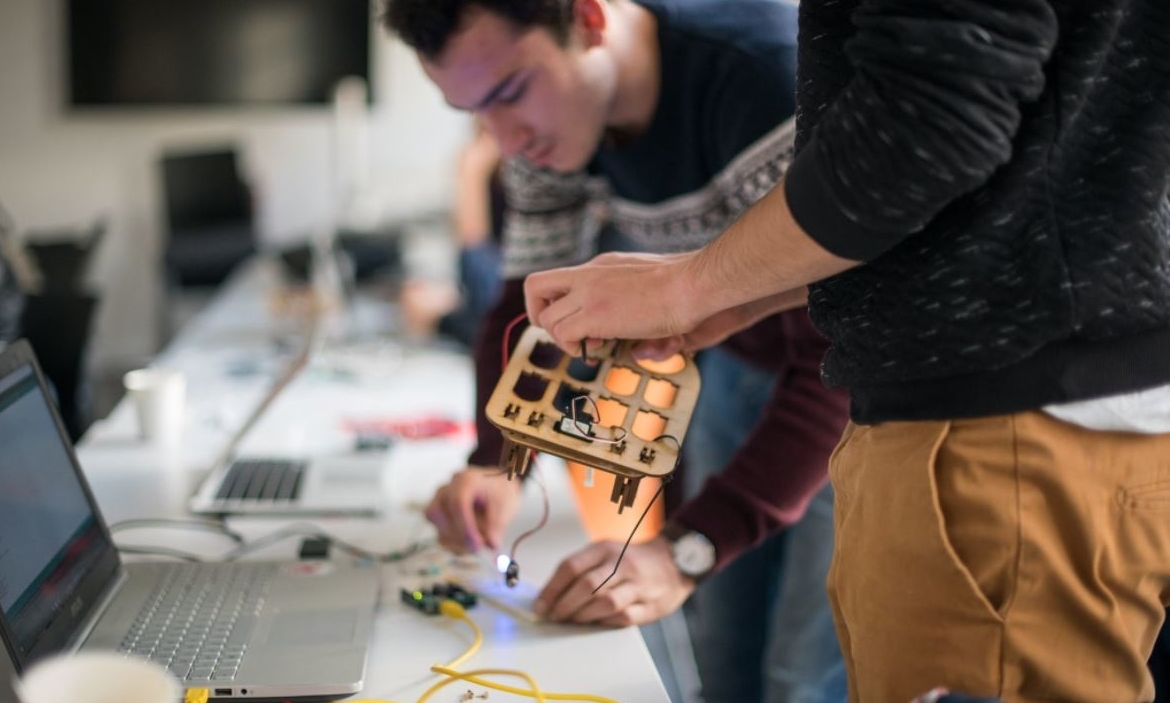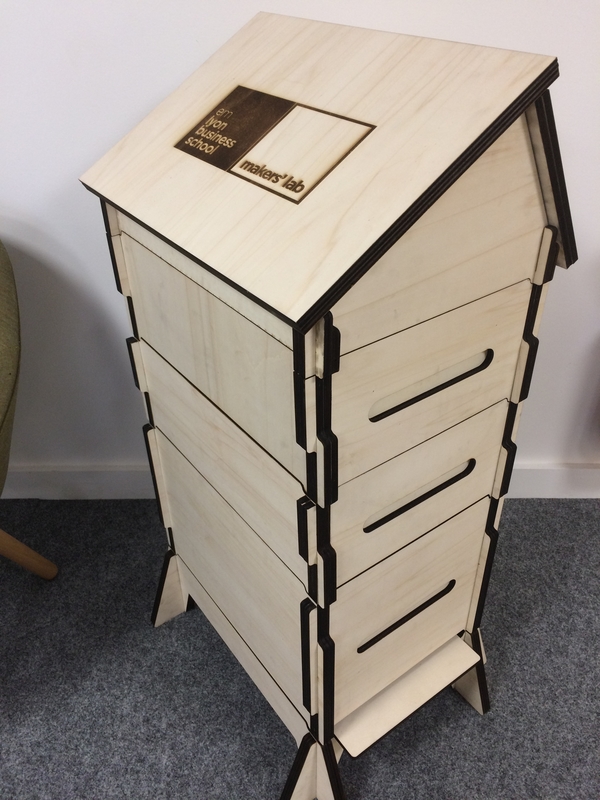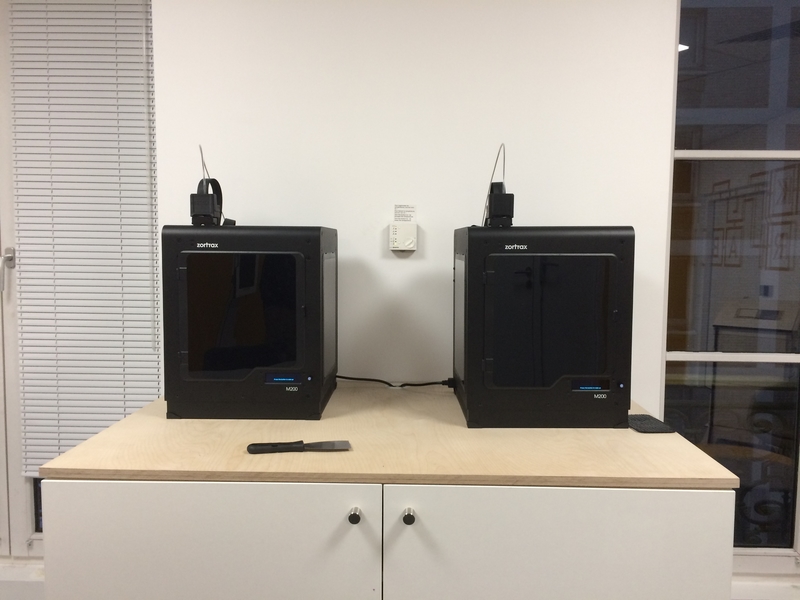3D Printing in Education: The Challenges of Opening a Makers Lab in a School
Posted By Amandine Richardot on Jan 3, 2018 | 0 comments
When it comes to education, 3D printing can be a major asset. Indeed, by teaching the students how to use this technology, they will learn valuable skills for their future. Moreover, 3D printing can be a great tool in terms of pedagogy. These are the main reasons why more and more universities decide to invest in the creation of their own digital manufacturing lab. What are the main challenges linked to these projects? How to successfully create a Lab in a university? To learn more, we had a talk with Samuel Javelle, Head of the Makers Labs of EM Lyon, one of the best French business schools.
3D printing in education: A true asset
The applications of 3D printing are numerous, and building more efficient and innovative learning processes is clearly one of them. Indeed, as a student, creating your own 3D printing projects teaches you many things, from project management to technical skills. Moreover, this kind of projects gives the student a real hint of what his professional life could look like, giving him practical skills, which differ a lot from what classical theoretical lessons can bring him.
3D printing can be used in many educational fields. Are you a mechanical engineering teacher? You can make your students work on prototypes. Are you an architecture teacher? They can use 3D printing to create their models. It can even be interesting for business schools: you can give your students valuable skills for their future career or their entrepreneurship projects.
Samuel Javelle, a 3D printing expert
Samuel Javelle is both an industrial designer and the Head of EM Lyon’s Makers Labs. Inside the renowned French business school, he coordinates everything regarding the Labs, from all campuses. He’s originally a product designer, passionate about FabLabs. As a proof of this strong interest, he worked for the first FabLab which opened in Lyon, for instance. Then, he launched his startup, Drawn, which creates large-scale 3D printers. After this adventure, he started working for EM Lyon.
Why does he have such a strong interest in digital manufacturing? He finds these technologies extremely interesting both for prototyping and production. In his field, he observed that they allow the digitization of design-related jobs. Moreover, they make customization of items way easier.
Introducing EM Lyon’s Makers Labs
Samuel made us visit Paris’ Makers Lab, which opened this September. Previously, there was already a Lab on Lyon’s campus since September 2016. Thus, we can see that it’s quite a recent project for the school, but that it’s growing fast. The goal of the Makers Lab is to help students learn how to use rapid manufacturing technologies, as well as 3D modeling and computer science: everything that a student could need to become a successful entrepreneur.
“We define ourselves as a third place, not a traditional classroom. We’re halfway between an educative spot and a living space” says Samuel to define the Labs.
Many events take place in the Labs. For instance, the team often organizes Makers Bootcamps, opened to all students and former students. The goal is to create an object that makes particular sense with one precise technology, from scratch, in a short amount of time (usually 4 days). The projects developed during these events are always linked either to Corporate Social Responsibility or to the improvement of EM Lyon’s campuses.
During the first edition, the students created connected hives using both laser cutting and 3D printing. They are now in action on the school’s roof. Here’s one of them:
Which rapid manufacturing technologies are being used?
All of the 3D printers are based on the Fused Deposition Modeling technology. More precisely, they are Zortrax M200 printers. Why such a choice of technology? Samuel explains that first of all, these machines are very robust, thus it’s very complicated to break them. Moreover, it’s quite easy to learn how to use them, in a short lead-time. Basically, they are a good choice for beginners. There’s also a whole room dedicated to laser cutting machines.
The Lab is only used for prototyping projects, not for the creation of finished products, which also explains this choice of technologies. If the needs of the students are more advanced, the team indicates some professional 3D printing services, such as Sculpteo.
The reasons behind opening a Makers Lab in a school
Why did EM Lyon decide to create such Labs? Samuel quotes several different reasons:
“We did it to turn our student’s ideas into prototypes more quickly than before. By doing so, we give them the keys to launching their entrepreneurship projects faster. Also, these new skills get along really well with our vision that the entrepreneur is the one who actually makes things.”
By becoming familiar with 3D printing, students become better entrepreneurs, able to launch their own projects with more agility. Samuel explains to us that right now, an entrepreneur who wants to convince an investor will have way more chances of succeeding if he already has a prototype. As a result, the goal behind the creation of this Lab is to help the students gain the needed skills.
Education: the main challenge of opening a 3D printing Lab in a school
The first challenge that Samuel experienced was to make the students come to the Lab, which he quickly overcame. But there was a true gap to cross in the beginning: helping them to get started with the needed tools. What was the solution? Teaching them, step by step, the basics of digital manufacturing and showing them that it was not as complicated as they expected it to be.
For a successful transmission of knowledge, the team decided to scale teaching with a dedicated YouTube channel. In addition, there are some specific training events dedicated to topics that need to be further studied. The overall goal is to have a very autonomous learning process. Indeed, thanks to it, students can acquire skills step by step, at their own pace.
But how to deal with failure, which can often be hard to handle when you get started with 3D printing technologies? “We encourage students to fail” confesses Samuel. Indeed, he explains to us that anyone learns a lot when he makes mistakes.
Regarding 3D modeling software, 95% of the students use TinkerCAD because it’s very easy to handle. If they have more complex needs, the team indicates them other 3D design software, but it can take quite a lot of time to learn how to create 3D models with them. Why is TinkerCAD considered so simple? Samuel explains to us that with this software you get a good understanding of space right away.
If you want to get started with this 3D modeling software, you can read our dedicated TinkerCAD tutorial.
What’s next for 3D printing labs in schools?
Now, let’s think about the future of 3D printing and education. Will these labs in universities become very common? According to Samuel, they clearly will. Their presence is already more and more normal. For instance, you can find some quite often in architecture schools or engineering schools. But they all have different approaches of 3D printing, obviously, due to their diverse objectives.
Samuel also noticed that 18 years old students are more comfortable with digital manufacturing technologies than 25 years old ones. It clearly shows that these techniques are going to become more and more common.
We bet that you’re now convinced that 3D printing is a major asset for education! Digital manufacturing techniques are extremely useful tools to teach valuable skills to students, either from business schools, architecture schools, or engineering schools. The challenges of education to these technologies remain quite important, but no doubt that digital tools will help to make it easier for anyone to learn the basic skills needed. Interested in learning more about the strong link between 3D printing and education? Discover our dedicated page. You can also check this blog post to find the best software to learn CAD in schools.
Credits for main photo: EM Lyon


 Connect with Google
Connect with Google Connect with Facebook
Connect with Facebook

